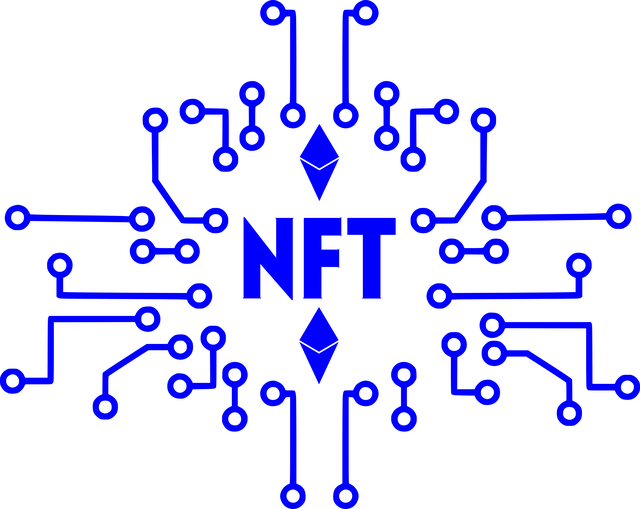Have you ever received an email from someone and noticed how their name and contact information was neatly placed at the end of the message? That simple yet important element is called a signature block. A well-crafted signature block adds a professional touch to your emails, letters, and even online forum posts. It not only conveys important information about who you are and how to reach you, but also reflects your personal brand and attention to detail. In this article, we will guide you through the process of creating an impeccable signature block that will leave a lasting impression on your recipients. Whether you’re a business professional, a freelancer, or simply someone who wants to make a statement, our tips and tricks will help you master the art of writing an effective signature block.
Contents
- 1. Understanding the Importance of a Signature Block in Professional Communication
- 2. Key Elements to Include in Your Signature Block: Name, Title, and Contact Information
- 3. Guidelines for Formatting Your Signature Block Correctly
- 4. Designing a Professional Signature Block: Choosing Fonts, Colors, and Logos
- 5. Enhancing Your Signature Block with Relevant Links and Social Media Icons
- 6. Tailoring Your Signature Block for Different Communication Platforms
- 7. Creating an Effective Signature Block for Email Correspondence
- 8. Maintaining Consistency and Updating Your Signature Block Regularly
- Frequently Asked Questions
- The Way Forward
1. Understanding the Importance of a Signature Block in Professional Communication
In professional communication, a signature block holds great significance as it provides essential information about the sender. This block typically appears at the end of an email or letter and acts as a virtual calling card, leaving a lasting impression on the recipient. Let’s dive further into why understanding the importance of a signature block is crucial in maintaining effective and credible professional communication.
1. Establishing Professional Identity: A well-crafted signature block conveys a sense of professionalism and adds credibility to your message. Including your full name, job title, and company name helps establish your identity and allows the recipient to easily identify and connect with you. It signals that you take your role seriously and are committed to open and transparent communication.
2. Contact Information Accessibility: Within a signature block, it is essential to include your contact information for easy access. This enables the recipient to reach out to you promptly if they have further questions or require additional information. Remember to include your email address, phone number, and relevant social media handles, if applicable. By providing varied contact details, you allow the recipient to choose their preferred mode of communication, leading to smoother and more efficient interactions.
3. Promoting Branding and Marketing: Your signature block can also be a platform to reinforce your brand identity and enhance your marketing efforts. Incorporating your company’s logo or a visually appealing design can leave a memorable impression. Additionally, you may use this space to promote upcoming events, special offers, or even a professional tagline. Tailoring your signature block to reflect your organization’s values and personality enhances brand recognition and can help foster business opportunities.
Remember, a well-designed signature block is a reflection of your professionalism, and it conveys your commitment to effective communication. By carefully considering its content and appearance, you can make a lasting impact and showcase your dedication to maintaining relationships within your professional network.
2. Key Elements to Include in Your Signature Block: Name, Title, and Contact Information
In crafting an effective signature block, it is essential to include key elements that convey professionalism and facilitate easy communication. A well-crafted signature block not only provides recipients with your identity but also enhances your personal brand. Here are some key elements to include in your signature block:
1. Name: Your signature block should prominently feature your full name. This helps recipients identify who you are and establishes a personal connection. You can use a larger font size or apply a bold formatting to make your name stand out.
2. Title: Clearly state your professional title or role within your organization. This provides recipients with a quick understanding of your position and expertise. Highlighting your title in a different font color or style can make it more visually appealing.
3. Contact Information: Include relevant contact information to make it easy for recipients to reach out to you. This typically includes your email address, phone number, and any other preferred contact methods. You can use bullet points or a horizontal line to separate each contact detail, making it visually organized and easily scannable.
Remember, a well-designed signature block can leave a lasting impression and contribute to effective communication. Take the time to craft a signature that is visually appealing, legible, and representative of your professional identity. By including these key elements, you can ensure that your signature block is informative and provides recipients with everything they need to connect with you.
3. Guidelines for Formatting Your Signature Block Correctly
Properly formatting your signature block is essential for maintaining a professional and cohesive appearance in your emails and documents. To ensure your signature block is correctly formatted, follow these helpful guidelines:
1. Consistency is key: Make sure to use the same font, size, and style throughout your signature block for a unified and polished look. This creates a visual harmony and prevents any distractions.
2. Keep it concise: The signature block should be brief, containing only necessary information. Include your full name, job title, and contact information such as telephone number and email address. Remember, a cluttered signature can be overwhelming and might distract from the main content of your emails.
3. Use separators: To visually distinguish between different sections of your signature block, consider using simple separators. You can achieve this by inserting a horizontal line or a subtle divider, helping to organize your information and make it easier to read.
4. Utilize hyperlinks: To make it convenient for recipients to access your online profiles or company website, create hyperlinks for any URLs you include in your signature block. This allows for quicker navigation and enhances the overall accessibility of your contact details.
By adhering to these formatting guidelines, you can create a signature block that projects professionalism and helps you leave a lasting impression. Remember, a well-structured and visually appealing signature block can serve as a valuable extension of your personal brand.
4. Designing a Professional Signature Block: Choosing Fonts, Colors, and Logos
When it comes to crafting a professional signature block, selecting the right fonts, colors, and logos can significantly enhance its impact. The choice of fonts plays a crucial role in conveying the tone and personality of your signature. Opt for clean, easily readable fonts that align with your overall branding. Popular options include Arial, Helvetica, and Calibri. Remember, simplicity is key here, as an overly complicated font can make your signature appear cluttered and unprofessional.
In addition to fonts, colors are paramount in creating a visually appealing signature block. Stick to a color scheme that aligns with your brand’s identity. Use colors that complement each other and make your signature stand out. A subtle and professional approach is to incorporate the colors of your logo into the signature block. This will help maintain consistency across your branding materials. Additionally, consider the psychological impact of colors; for example, blue exudes trustworthiness, while green symbolizes growth and prosperity.
When it comes to logos, it’s important to strike the right balance between visibility and professionalism. Ensure that your logo is appropriately sized within your signature block, neither too small nor too overwhelming. Avoid distractions by using a clean and transparent background for your logo. Remember, less is more, so resist the temptation to clutter your signature block with multiple logos. By choosing a visually appealing logo that reflects your brand’s image, you can create a signature block that leaves a lasting professional impression.
5. Enhancing Your Signature Block with Relevant Links and Social Media Icons
In today’s digital age, your signature block holds great potential for enhancing your professional online presence. By incorporating relevant links and social media icons into your email signature, you can effectively connect with others and showcase your online portfolio. Including a link to your personal website or portfolio allows recipients to easily explore your work and get a better understanding of your expertise.
To maximize your signature block’s impact, consider adding links to your social media profiles such as LinkedIn, Twitter, or Instagram. This not only makes it convenient for receivers to connect with you on different platforms but also enables them to stay updated with your latest achievements and professional endeavors. Including these links not only demonstrates your active engagement in the digital sphere but also helps build your personal brand and online reputation within your industry.
Moreover, utilizing proper HTML formatting can make your signature appear visually appealing and well-organized. Use unnumbered lists to display your links and social media icons clearly, ensuring they are easily clickable and accessible for recipients. You can also make key information stand out by using bold formatting for your name, job title, and contact details. Remember, a well-designed and informative signature block can leave a lasting impression on those who receive your emails, further bolstering your professional image.
6. Tailoring Your Signature Block for Different Communication Platforms
When it comes to communicating across various platforms, it’s essential to tailor your signature block accordingly. By adapting your signature block to suit each platform’s specific requirements, you can ensure maximum impact and professionalism. Here are a few tips to help you fine-tune your signature block for different communication platforms:
1. Email: In your email signature, make sure to include your full name, job title, and company name. Add hyperlinks to your professional social media profiles, such as LinkedIn or Twitter. Consider including a short and catchy tagline or a call-to-action to encourage recipients to engage further. Lastly, insert a high-resolution profile picture to make your email more personable.
2. Instant Messaging: When using instant messaging platforms like Slack or Microsoft Teams, keep your signature block concise. Include only the necessary details, such as your name, job title, and a link to your company website. It’s also a good idea to add a brief one-liner about what you do or your area of expertise. Avoid including any personal contact information, as these platforms typically have built-in contact systems.
By tailoring your signature block specifically for each platform, you can make a lasting impression. Remember, it’s all about providing the right information in the right format, ensuring your signature block remains professional, informative, and visually appealing across all communication channels.
7. Creating an Effective Signature Block for Email Correspondence
In email correspondence, an effective signature block can leave a lasting impression on your recipients while showcasing professionalism. Here are a few key elements to consider when creating your signature block:
1. Contact Information:
– Include your full name, job title, and company name for clarity.
– Add your phone number and email address to make it easier for people to reach you.
– Optionally, include your physical address or links to your social media profiles.
2. Sign-off Message:
– Enhance your signature block with a personalized sign-off message that reflects your personality or the values of your organization.
– Keep it concise and friendly to maintain a positive tone.
– You may consider adding a relevant quote or tagline that aligns with your professional goals.
Remember, simplicity is key when it comes to signature blocks. Make sure to use an appropriate font and size to maintain readability. Avoid overloading your signature with unnecessary graphics or images that could distract from the main content of your email. By carefully crafting your signature block, you can create a professional and visually appealing representation of yourself or your business that will leave a memorable impression on your email recipients.
8. Maintaining Consistency and Updating Your Signature Block Regularly
Maintaining consistency in your signature block is crucial to establishing a professional image and ensuring that your contact information is always up to date. Here are a few tips and best practices to keep your signature block consistent and regularly updated:
1. Keep it simple: Your signature block should include essential information, such as your full name, job title, company name, and contact information. Avoid cluttering it with unnecessary details or excessive formatting.
2. Use a standardized format: Establish a consistent format for your signature block, ensuring that it is easy to read and visually appealing. Consider using a consistent font, font size, and color scheme for a cohesive look.
3. Include relevant contact details: In addition to your email address, consider including your phone number, office address, and professional social media handles. Be sure to hyperlink these details for easy access.
4. Add professional links: If applicable, include links to your company website, LinkedIn profile, or portfolio. This can enhance your online presence and make it easier for recipients to connect with you.
Remember to update your signature block regularly to reflect any changes in your contact information, job title, or company details. By doing so, you ensure that your recipients have accurate and up-to-date information when they communicate with you. Maintaining consistency in your signature block helps build trust and professionalism, making it easier for others to reach out and connect with you.
Frequently Asked Questions
Q: Why is it important to have a professional signature block?
A: A professional signature block adds a touch of credibility and enhances your image in the business world. It helps establish your professional identity and ensures that important information like your name, title, and contact details are easily accessible to others.
Q: What are the essential elements to include in a signature block?
A: The essential elements of a signature block include your full name, your professional title or designation, the name of your organization, contact details such as email address, phone number, and optional links to your website or social media profiles.
Q: How should I format my signature block?
A: The format of your signature block should be clean and easy to read. Use a legible font and keep the font size around 10-12 points. Separate each element of your signature block with vertical bar or line spacing for clarity. Place your signature block at the bottom of your email or document, aligned to the left or right margin.
Q: Can I include a professional photo in my signature block?
A: Including a professional photo is a personal choice. While it can add a personal touch and help clients or colleagues connect a face to your name, it is not essential. If you decide to include a photo, make sure it is high-quality, properly lit, and professionally appropriate.
Q: Should I include my addresses in the signature block?
A: In most cases, it is not necessary to include your physical addresses in the signature block. However, including your preferred mailing address can be relevant for certain professions, such as real estate agents or consultants who frequently interact with clients by mail.
Q: How can I ensure my signature block is consistent across various platforms?
A: To maintain consistency, create a standard signature block that can be copied and pasted across different platforms. You can save it as a signature template in your email client or use third-party tools that allow syncing your signature across various devices. Regularly review and update your signature block to reflect any changes in your contact details or professional designations.
Q: Are there any guidelines to follow when writing the name and designation in a signature block?
A: When writing your name, use your full name, including any middle initials or names. For the designation, include your specific job title or relevant professional designation that showcases your expertise. Avoid using overly lengthy job titles or acronyms that may confuse recipients.
Q: Can I include social media icons in my signature block?
A: Yes, you can add social media icons linking to your professional profiles in your signature block if applicable. This is especially useful for professionals who actively engage with clients or share their expertise on platforms like LinkedIn or Twitter. Place the icons with a reasonable size, ensuring they do not make your signature block look cluttered.
Q: Are there any best practices for signature block design?
A: Some best practices for signature block design include using a font that matches your professional branding, using basic colors to maintain a clean and professional look, and avoiding excessive use of bold or italic fonts. Additionally, consider keeping your signature block concise by including only relevant information to avoid overwhelming the reader.
Q: How frequently should I update my signature block?
A: It is advisable to review and update your signature block whenever there are changes in your contact details, professional designations, or organizational affiliations. Regularly updating your signature block ensures you present accurate information to recipients and maintain a professional image.
The Way Forward
In conclusion, mastering the art of writing a signature block is essential for leaving a lasting professional impression.







